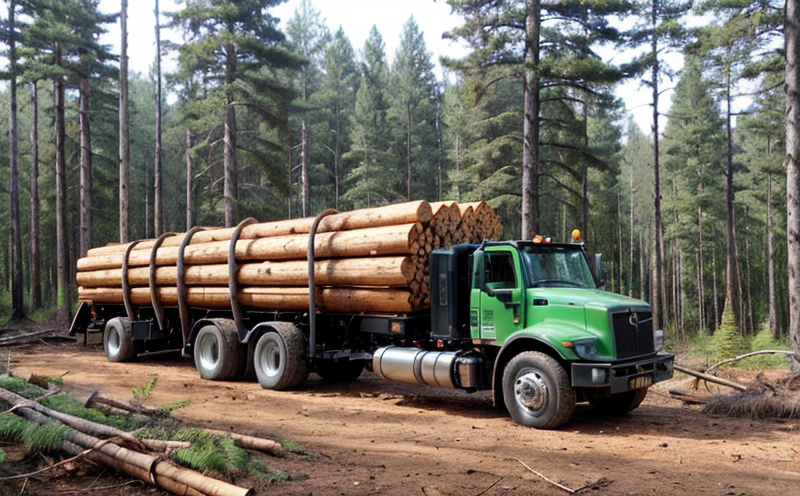Timber Moisture Content Testing
In the realm of agriculture and forestry testing, timber moisture content testing is a critical component ensuring quality control and compliance. Timber, as a natural material, can vary widely in its moisture content depending on environmental conditions such as humidity and temperature during harvesting and processing. This variability can significantly impact the performance, durability, and safety of wood products used across various sectors including construction, furniture making, and packaging.
Accurate measurement of timber moisture content is essential for several reasons:
- To prevent structural damage: Excess moisture in timber can lead to warping, rotting, and other forms of degradation. This is especially important in high-humidity environments where wood can absorb water quickly.
- To ensure product quality: Moisture content directly affects the strength and durability of wood products. For instance, furniture made from over-moistured wood may split or crack due to shrinkage during drying processes.
- To comply with regulations: Many industries have strict standards regarding timber moisture levels. Failure to meet these can result in non-compliance fines and reputational damage.
The testing of timber moisture content is typically carried out using various methods, each suited to different applications and requirements:
- Gravimetric method: This involves drying a sample of wood under controlled conditions until it reaches equilibrium with the surrounding air. The reduction in weight indicates the amount of water lost during this process.
- Infrared (IR) spectroscopy: IR spectrometers can measure moisture content by detecting characteristic absorption peaks associated with H-O bonds within molecules of water.
- Capacitance probes: These sensors work on the principle that the dielectric constant of wood changes with its moisture content, allowing for non-invasive measurement.
Accurate testing is crucial not only for quality assurance but also in promoting sustainability. Proper management of timber moisture can reduce waste and increase the lifespan of products, thereby conserving natural resources. Understanding these factors helps ensure that timber is used efficiently and responsibly across various sectors.
Applied Standards
The international standard for timber moisture testing is ISO 15113, which provides guidelines for determining the moisture content of wood using gravimetric methods. This standard ensures consistency and accuracy in measurements across different laboratories worldwide.
In addition to ISO standards, other regional organizations such as ASTM (American Society for Testing and Materials) may also provide supplementary guidance tailored to local conditions or specific industries. Compliance with these standards is crucial for ensuring that timber products meet the necessary quality benchmarks required by various sectors.
Scope and Methodology
The scope of timber moisture content testing encompasses a wide range of applications, from construction materials to specialized furniture pieces. The methodology involves collecting representative samples from the batch or lot being tested. These samples are then prepared according to specified protocols before undergoing one of several accepted testing procedures.
For instance, gravimetric methods involve drying the sample in an oven and comparing its initial and final weights after reaching equilibrium moisture content (EMC). Alternatively, non-invasive techniques like capacitance probes offer real-time readings without physically altering the sample. The choice of method depends on factors such as precision requirements and available equipment.
Environmental and Sustainability Contributions
- Reduced waste: Proper moisture management ensures that timber is used efficiently, minimizing unnecessary discard due to poor quality.
- Conservation of resources: By optimizing the use of raw materials, sustainable practices are enhanced, contributing positively to environmental conservation efforts.
- Enhanced durability: Ensuring that timber products have appropriate moisture content extends their operational lifespan, reducing the need for replacement and associated resource consumption.





